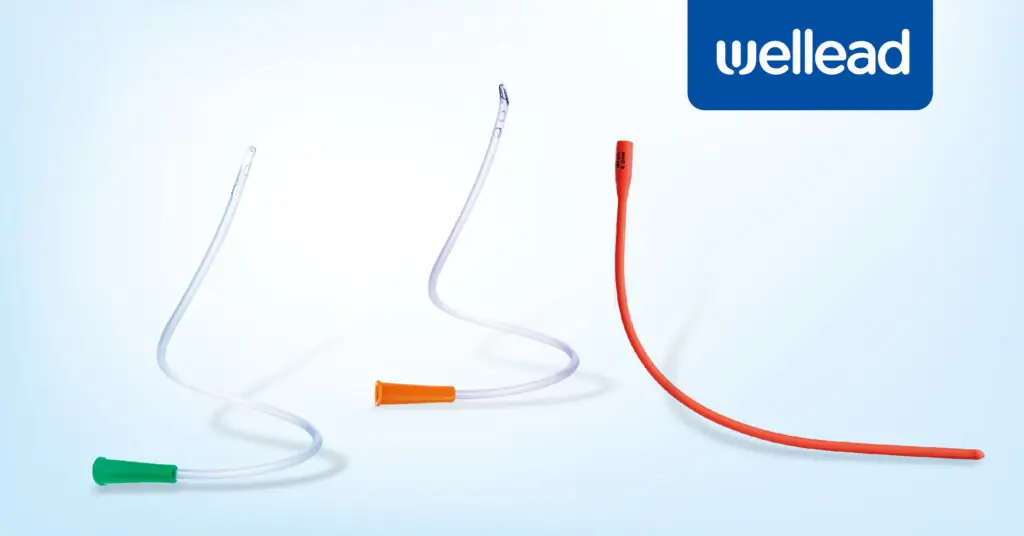What is a Nelaton catheter? Flexible, straight, single-lumen Nelaton catheters are used for intermittent urethral catheterization. They empty the bladder momentarily via the urethra following surgery or urine retention. Plus, they must be used aseptically to avoid infections, gently to limit urethral stress, and at the right size to decrease friction and comfort. Appropriate lubrication is also necessary to prevent mucosal irritation and guarantee patient safety.

Indications of Nelaton Catheter
- Urinary retention management.
- Collection of sterile urine samples.
- Relief from bladder distention discomfort.
- Bladder decompression.
- Intermittent catheterization.
- Postoperative urinary drainage.
- Administration of intravesical medications.
- Diagnostic procedures requiring bladder access.
At Well Lead Medical, we offer numerous Nelaton catheters to meet clinical needs. Our products include standard Nelaton catheters, Nelaton catheters with Tiemann tips, and red latex Nelaton catheters. Each has medical-grade materials for performance and patient safety. We provide different sizes and configurations for patient requirements. Our dedication to quality and innovation gives healthcare practitioners trustworthy urinary management solutions.
Preparation for Nelaton Catheter Insertion
Preparation for Nelaton Catheter Insertion
First, all equipment must be assembled to insert a Nelaton catheter. Per patient requirements, include the appropriate Nelaton catheter size, say 6Fr to 24Fr. Confirm the availability of a sterile lubricant, including water-soluble jelly, for lower trauma during insertion. Prepare sterile gloves, an antiseptic solution (chlorhexidine or povidone-iodine), and a disposable waterproof drape for sterility. Have a urine collection bag or container for drainage so its capacity matches the volume. Finally, ensure the presence of a flashlight or examination lamp if lighting in the procedure area is suboptimal. Each item must meet sterility standards to avoid infection risks.
Hygiene and Sterility
An aseptic technique is key during Nelaton catheter insertion to avert CAUTIs. First, wash with antimicrobial soap for a few seconds before donning sterile gloves. Use pre-packaged, sterile catheterization kits when available. They help follow sterility. Clean the urethral meatus using a sterile swab moistened with antiseptic in circular motions. Move outward to decrease contamination. Any breach of sterility, including touching non-sterile surfaces, needs correction or restarting the preparation.
Positioning the Patient
Positioning impacts the success and comfort of Nelaton catheter insertion. Slight variations may be needed per the patient’s anatomy. Use adjustable stirrups to lower the practitioner’s strain and better visibility. Also, support the patient’s hips and knees with cushions to abate movement during insertion. If mobility issues exist, consider lateral decubitus positioning with support. Adapt positioning for patient comfort and procedural efficacy.
Step-by-Step Guide to Insert a Nelaton Catheter
- Gather necessary equipment.
- Perform hand hygiene and don gloves.
- Explain the procedure to the patient for informed consent.
- Position the patient appropriately (supine position).
- Prepare and drape the area using sterile techniques.
- Apply water-soluble lubricant to the catheter tip.
- Clean the urethral opening with antiseptic.
- Gently place the catheter in the urethra.
- Advance the catheter until urine flows.
- Allow urine to drain completely.
- Remove the catheter slowly.
- Clean the area for patient comfort.
- Throw away the catheter and contents in a biohazard container.
- Remove gloves and wash hands.
- Document the operation in the patient’s chart.
Warnings and Precautions for Nelaton Catheter Use
When using a Nelaton catheter, guarantee sterile technique to thwart urinary tract infections. The reason is that the catheters lack retention balloons and must be inserted and removed manually. Consider the peril of urethral trauma in patients with strictures or post-surgical modifications. That’s where undue force can exacerbate damage. For example, using lubrication decreases friction and epithelial injury. In cases of neurogenic bladder, monitor catheterization frequency to avoid overdistension or incomplete drainage and, hence, hydronephrosis.
Evade lengthy use since Nelaton catheters are not meant for indwelling purposes. Otherwise, the risk of biofilm development and encrustation increases. Last but not least, size the catheter per the patient’s anatomy. Using a gauge that is too large can cause mucosal tears. Meanwhile, a gauge that is too small may trigger insufficient drainage or buckling during insertion.
Conclusion
Well Lead Medical designs and manufactures medical equipment, including but not limited to Nelaton catheters. Our goods fulfill global healthcare professional standards. Our products are sold in over 96 countries. Most of our items are CE and FDA-certified, which shows our quality dedication. Innovative patient care solutions are developed via ongoing research and development. While working with distributors and hospitals worldwide, we make our goods available to patients worldwide.

